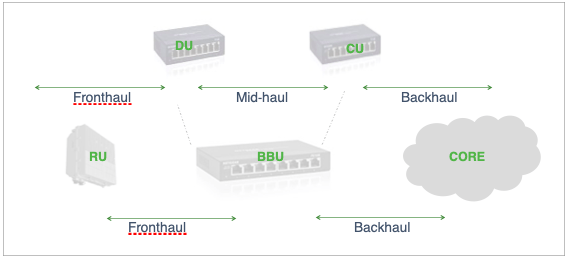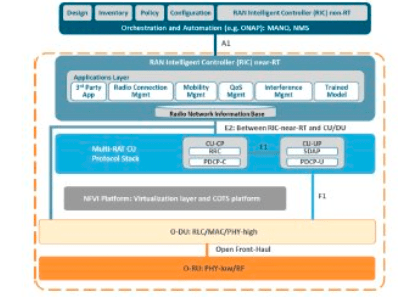
OpenRAN Series: What is Open RAN? (Part 1 of 3)

|
Author: Mark Curran |
|---|
October 30, 2020
There is a lot of excitement in the Telecommunication community about Open RAN, with more and more trials and deployments being announced with network operators in various parts of the world. But what is Open RAN? Well, it’s the vendor-neutral dis-aggregation of hardware and software in the Radio Access Network (RAN) where the RAN is composed of software components from various vendors running on commercial-off-the-shelf (COTS) hardware communicating over truly “open and interoperable” standardized interfaces. It is a disruptive technology moving the telco infrastructure from a static, vertically integrated, propriety ecosystem to one that is dynamic and horizontally integrated removing vendor lock-in and broadening the supply chain.
We did not wake up one morning and see a bright, shiny and new Open RAN solution sitting on the footpath. Rather it has been a gradual development, as technologies advanced and possibilities developed.
The main RAN vendor manufacturers have already introduced distributed base station architectures de-coupling the radio function implemented in the RRH (Remote Radio Head) and the digital functions implemented in the BBU (Baseband Unit). This allows more deployment flexibility while each RAN solution remained vendor specific.
C-RAN (centralized or cloud RAN) architecture enables a deployment model where the digital functions can be centralized in a data centre with just the RRH and antennas on site – a far cry from the days when a double 19 inch rack was needed to house a base station. The BBU and RRH are connected on dedicated, high-bandwidth connections. Vendor specific HW and SW is still used for the BBU and RRH so this solution is not open.
vRAN (Virtualised RAN) aims to move the digital functions onto COTS hardware. The interfaces are not necessarily open so even though the digital functions are running on COTS hardware vRAN is not fully open though it is an important step on the way to a truly open RAN solution.
For a solution to be truly open, the different components of a RAN solution must interwork with other components from other vendors, without a huge investment in Inter-operability testing (IOT). The solution must be sufficiently standardized to ensure the components from different vendors will work well together while leaving space for vendors to be innovative in their solutions.
The standardization of RAN dis-aggregation started with the 3rd Generation Partnership Project (3GPP) definition of a number of logical splits to enable increased deployment flexibility, and is being further refined by the O-RAN Alliance to provide the open interfaces needed for even further dis-aggregation.
A key part of dis-aggregation is splitting the functionality of the BBU into a DU (distributed unit) that handles time-critical functions such as L1 and L2, and a CU (central unit) handling less latency sensitive packet processing functions. Both CU and DU should be realized as a VNF (virtualized network function) or CNF (containerized network function) on COTS hardware.
Figure 1 BBU split
Various lower layer split (LLS) options are suggested for the front-haul, with one option gaining acceptance being the 7-2x split as specified by the O-RAN Alliance for LTE and 5G.
Many deployment options are available from having the CU and DU co-located on site to having DUs and CUs located many kilometres apart. It is possible to have deployments with DUs in data centres or in a stand-alone enclosure. The flexibility is tremendous!
The O-RAN alliance (formed from the amalgamation between the CRAN alliance and the XRAN forum) was founded by network operators to define requirements and help build a supply chain ecosystem to facilitate achieving a position where “RANs are built on a foundation of virtualized network elements, white-box hardware and standardized interfaces that fully embraces O-RAN’s core principles of intelligence and openness“. The O-RAN Alliance bases its specifications on 3GPP and has contributing members from the legacy incumbent vendors, operators and new (often smaller) vendors in the RAN ecosystem. The O-RAN reference architecture incorporates the mid-haul (W1/F1) and Control Plane/User Plane Separation (E1) interface specifications defined in 3GPP, alongside the O-RAN Alliance defined Open Fronthaul, near-Real Time RAN Intelligent Controller (E2) and non-Real Time RAN Intelligent Controller (A1) interfaces. As the same operators are active contributors in both the O-RAN alliance and 3GPP, they can ensure there is alignment between both bodies.

Figure 2 ORAN reference architecture from O-RAN Alliance
Huge leaps forward are now being made in the Open RAN ecosystem. It is at an early stage of adoption, but more and more network operators realize the potential gains in using Open RAN solutions from vendor independence to deployment flexibility to long-term TCO savings. They are actively pursuing Open RAN solutions to expand and improve their networks.
Open RAN is a truly disruptive technology with tremendous potential for increasing operator independence, increasing deployment options and improving end-user access. Implementing it in new and existing RANs will naturally be a challenging undertaking but one which will be very worthwhile, enabling more and more options for new operators and incumbents alike. It is an exciting time for players in the Open RAN ecosystem!
Don’t miss out on part two of our OpenRAN blog series by subscribing.






